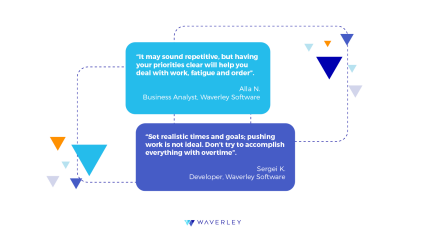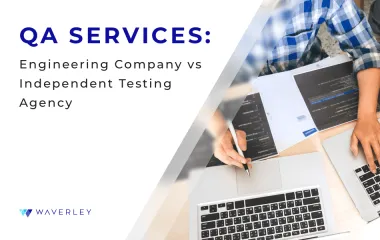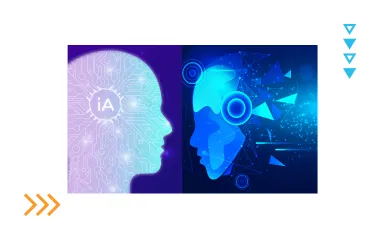Team Health for Efficient Engineering Teams

Building efficient engineering teams requires more than just technical skills. Today, the software and technology industries change continuously. To keep up with delivering top-notch technology solutions, companies must consider the key factors to long-term success and efficiency inside teams.
High-performing teams must be efficient, engaged, motivated, and well-supported. This article will explore the fundamental aspects of creating such teams, how to recognize burnout and quiet quitting, and strategies for improvement.
Contents
- Understanding “Quiet Quitting” in Engineering Teams
- Recognizing the Signs of Quiet Quitting and Burnout
- Solutions: Managing Workloads and Preventing Burnout
- Solutions: A Worker’s Perspective
- Conclusion
Understanding “Quiet Quitting” in Engineering Teams
Defining Quiet Quitting
Quiet quitting occurs when employees continue to put in the minimum effort to keep their jobs but don’t go the extra mile for their employer. This may involve not speaking up in meetings, avoiding task volunteering, and declining overtime work. It could also lead to increased absenteeism.
Why Does It Happen?
There are multiple reasons: the pressure of unmanageable workloads, lack of career growth, poor management, and limited recognition can all contribute to this disengagement.
Impact on Engineering Teams
Quiet quitting can lead to missed opportunities, declining innovation, lower productivity, and declining team morale.
Recognizing the Signs of Quiet Quitting and Burnout
Signs of Quiet Quitting:
- Declining Engagement: Less participation in meetings, fewer contributions to discussions, and a general lack of enthusiasm.
- Minimal Effort: Team members do the bare minimum and may express frustration if asked to go beyond their assigned tasks.
- Absenteeism: Increased sick days or a visible decline in punctuality and attendance may signal disengagement.
Signs of Burnout:
- Emotional Exhaustion: Employees may appear overwhelmed, fatigued, disengaged, and increasingly irritable.
- Reduced Productivity: Tasks take longer to complete, and the quality of work declines due to lack of focus or motivation.
- Physical Symptoms: Complaints of physical exhaustion, frequent illnesses, or complaints related to stress and anxiety.
Solutions: Managing Workloads and Preventing Burnout
Workload Distribution:
- Workloads are distributed evenly across the team, considering each individual’s capacity and personal situation.
Encouraging Breaks and Downtime:
- Structured Breaks: To maintain mental sharpness and reduce stress, promote the use of breaks during long coding sprints or meetings.
- Mandatory Time Off: Encourage employees to take vacation days to disconnect from work and recover.
- Internal Activities nonrelated to work: Activities clubs, team building sessions, mindfulness training, and stress management tools.
Fostering Team Engagement and Motivation:
- Autonomy: Give engineering teams ownership over their projects and decision-making, which enhances motivation and a sense of responsibility.
- Focus on Intrinsic Motivation: Help team members align their values with their work, fostering a sense of purpose and connection to the company’s mission.
- Encourage Innovation: Give engineers opportunities to experiment with new technologies, tools, or side projects that excite them.
Leveraging Technology and Tools for Team Efficiency:
- Tools for Collaboration: Use the correct tools (like Jira, Github, Zoho, Notion, etc.) to improve communication, streamline project management, and track progress.
- Automate Repetitive Tasks: Invest in CI/CD (Continuous integrations and continuous delivery) pipelines, automated testing, and other tools to reduce the mental burden of repetitive tasks, allowing engineers to focus on more challenging work.
- Promote Knowledge Sharing: Create internal glossaries or knowledge-sharing platforms to reduce reliance on individual team members and empower everyone with the necessary resources to succeed.
Effective Leadership to Prevent Burnout and Quiet Quitting:
- Understanding Leadership: Leaders should pay attention to their teams’ emotional and psychological well-being and demonstrate empathy and understanding when issues arise.
- Transparent Communication: Discuss the project’s and company’s goals and challenges and how team members contribute to the larger vision. This discussion helps employees feel more directed and motivated.
- Trust and Delegation: Empower employees to manage their tasks and make decisions. Micromanaging can lead to stress and lower morale.
Building a Sustainable Engineering Culture:
- Employee Growth: Focus on long-term career development rather than pushing employees beyond their limits for short-term results. Choosing growth ensures the team stays motivated, healthy, and productive.
- Periodic retrospective: Implement regular check-ups to evaluate what’s working and what isn’t and how processes can be improved. Ensure this feedback loop is continuous and actionable.
- Be ready to adapt: The technology industry is constantly evolving. It is essential to encourage a culture of learning and adaptability that allows team members to explore new tools, methodologies, and technologies.
Solutions: A Worker’s Perspective
It’s essential to have the opinion of employees. Their insight and first-hand experience help us understand the solutions described and prove they are viable. Talking with workers in different teams, these are the solutions presented by them:

- Set your priorities: One has to have their priorities clear. You can better understand your workload when you have all your tasks and projects in sight. You can also ensure that all the necessary accesses and tools are in order.
- To-do lists: It’s essential to have a to-do list that is in a priority order. You can use tools like Trello, Todoist, and Notion. Also, you can personalize your Apple notes (or any note taker you have available). A tool like Jira or Slack can help track and communicate with your team.
- Communication is key: A team works better with clear and continuous communication. Talking helps you understand the projects and your teammates. You can properly speak when something is unclear or when you might be starting to feel overwhelmed. This way, the workload can be reevaluated, and some tasks can be delegated. Remember, it’s okay to ask for help.
- Coordinate with your team: Scheduled or checkpoint meetings help oversee the projects. This way, everyone can have clear goals and an overall update of where everyone is. You can find solutions to sudden setbacks, keep everything on track, and avoid working overtime.
- When feeling overwhelmed, “stop for a minute.”: There are signs that one is about to get overwhelmed. It’s vital to recognize these signs (tiredness, inability to focus, desperation, anxiety, etc.) and stop momentarily. Taking a break allows you to breathe and clear your head. You can go for a short walk and drink a cup of coffee.
- Don’t overestimate your rest time: It’s expected that a person can neglect proper resting when working on a project. Hyperfocus is common in developing projects. One must always plan rest time. Resting allows you to recharge and stop thinking about work so you can rest your mind. After a good rest, you feel more in control and start looking at your goals more clearly.
Conclusion
Building and maintaining an effective engineering team requires both technical and emotional expertise. Recognizing early signs of burnout or quitting quietly and implementing the right solution will lead to a healthier and more engaged team.
A motivated and productive team is the key to practical solutions and innovations in the tech industry. Companies ensure long-term and continuous success by investing in their team (people), recognizing their contributions, and promoting their well-being.
Invest in your team today, and watch your projects soar to new heights!





